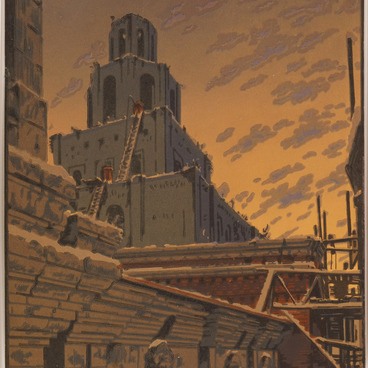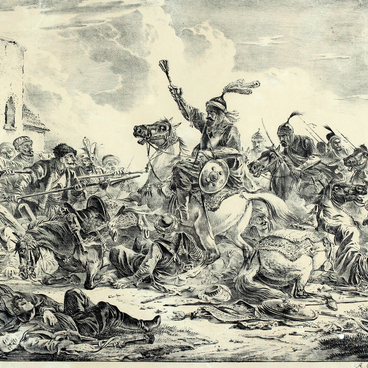The collection of the Irbit State Museum of Fine Arts presents a portrait etching of Leo Nikolayevich Tolstoy; it was made in the drypoint technique following the original painting by Leonid Osipovich Pasternak.
In 1890, Leonid Pasternak associated with artists from Vasily Polenov’s circle, including Valentin Serov, Konstantin Korovin, Isaac Levitan, and Mikhail Vrubel. This organization would later grow into the Union of Russian Artists. The participants promoted complete freedom in art, and Leonid Pasternak became the first Russian artist to call himself an impressionist. Pasternak’s artistic approach is based on drawing sketches immediately, almost instantaneously, the artist himself called this method the school of “real impressionism”. Pasternak managed to preserve the immediacy of impression in his paintings as well by depicting a seemingly random yet revealing movement. Pasternak’s work is distinguished by a unique rendering of light and shadow contrasts of the light and air.
The Society for Travelling Art Exhibitions (also
known as Peredvizhniki) in Moscow did not recognize Pasternak’s talent.
Nevertheless, it was the Peredvizhniki exhibition where in 1893 a pivotal meeting
took place. Leo Tolstoy took notice of Pasternak’s painting “Debutante”, and
the artist was introduced to him. Tolstoy then said, “Yes, yes, I know that
name. I’ve been following his work.” Members of the Pasternak family became
frequent guests of Tolstoy both in Moscow and at the writer’s family estate
called Yasnaya Polyana. This would lead to a series of the great writer’s portraits,
and Pasternak would be considered one of the best illustrators of the works by
Leo Nikolayevich Tolstoy. His illustrations for the novel “Resurrection” were demonstrated
in the Russian Pavilion at the World Exhibition in Paris in
1900 and received a medal. The artist also created a series of portraits
of the Tolstoy family. In 1902, Pasternak’s painting “Tolstoy and His Family in
Yasnaya Polyana” was purchased by Grand Duke George Alexandrovich Romanov for
the Russian Museum. Back then, Leonid Pasternak was referred to as Leo Tolstoy’s
“mirror”.


